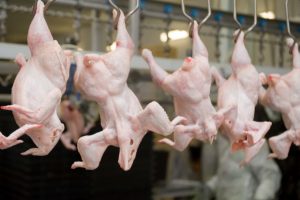Hello Guest,
 OK, that may be a big call, as there is not one “silver bullet” to solve this country’s perceived Campylobacter on chicken problem, as there are many facets to it. But, the technology to substantially reduce the amount of it present on the fresh chicken sold to consumers is available, has been well proven, and can be easily integrated into the chicken processors production lines.
OK, that may be a big call, as there is not one “silver bullet” to solve this country’s perceived Campylobacter on chicken problem, as there are many facets to it. But, the technology to substantially reduce the amount of it present on the fresh chicken sold to consumers is available, has been well proven, and can be easily integrated into the chicken processors production lines.
Developed in Denmark (which interestingly has very similar serotypes of Campy as NZ) by a government affiliated research company, the technology – known as Sono-Steam, utilises a clever combination of steam and ultrasound to quickly kill bacteria on the surface of the chicken carcase just prior to packing (see here for a technical explanation). Because it is so effective the treatment time is only 1-2 seconds per bird, so can be performed in-line at speeds that are more than equal to the fastest processing line in NZ.
This technology has been in testing for over three years and is now used in commercial production situations, with nearly 4 million birds being treated by it every week in the UK alone. The Sono-Steam treatment consistently delivers up to an 80% reduction of Campylobacter, which allows poultry companies to deliver safer products to their customers without treating them with chemical during the process, which is illegal in the EU – unlike in this country which routinely submerges the chickens in sodium hypochlorite solution, and sprays them with acidified sodium chlorite.
As many have pointed out in social media, the “problem” would not exist if everyone just handled their raw chicken correctly and cooked it properly. That is true, but since that is not likely to become a reality anytime soon, it is in the poultry industries best interests to make their products as safe as possible, to avoid alarmist news articles with distorted figures from turning consumers away from chicken meat, due to the perceived safety risks.
